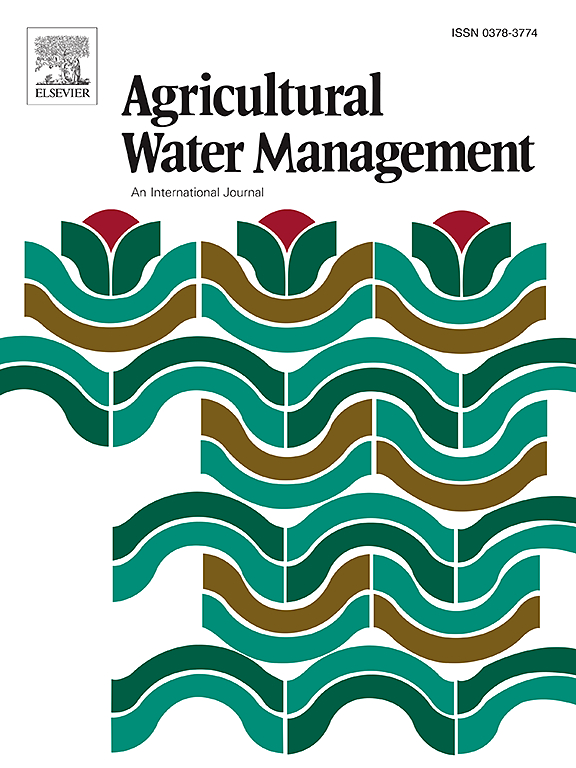Catchment-based approach for water table management with irrigation for cultivated peatlands
IF 6.5
1区 农林科学
Q1 AGRONOMY
引用次数: 0
Abstract
Controlled drainage and subsurface irrigation have been proposed to enable shallow-drained agriculture in organic soils and mitigate greenhouse gas (GHG) emissions from intensively cultivated peatlands. However, the effects of current drainage practices on peatland water table depth (WTD) and the potential of using runoff from upstream catchment areas to adjust WTD in northern conditions are still poorly understood. To address these issues, WTD monitoring was initiated on 13 cultivated peatlands with different drainage systems in the flat western coastal region of Finland. Monitoring locations with old subsurface drainage, new subsurface drainage, and open ditch drainage had average WTD of 0.51 m, 0.82 m, and 0.95 m, respectively, during the two monitoring years (11/2022 – 10/2024). For each field, we estimated the size of the upper catchment, median summer total runoff, and mean 7-day summer low flow rate. The water required to reach a 0.3 m target WTD was estimated from peat specific yield. Each 0.1 m decrease in mean WTD was estimated to require of 13.2 mm of additional water. Median summer total runoff from the upper catchment was sufficient to reach any target WTD, but the summer low-flow rate did not fulfil the daily water demand. Most runoff is available during early summer, thus creating a timing challenge with water availability even in region with excess annual precipitation. This highlights the importance of catchment-scale management for GHG mitigation. In this study, we propose a generally applicable framework to link peatland GHG mitigation with water resources and catchment-scale management.
以集水区为基础的地下水位管理方法及泥炭地灌溉
人们提出了控制排水和地下灌溉,以实现有机土壤中的浅排水农业,并减少集约化种植泥炭地的温室气体排放。然而,目前的排水实践对泥炭地地下水位深度(WTD)的影响以及利用上游集水区的径流来调整北部条件下的WTD的潜力仍然知之甚少。为了解决这些问题,在芬兰平坦的西部沿海地区对13个具有不同排水系统的泥炭地进行了WTD监测。在两个监测年份(2022年11月- 2024年10月),旧地下排水、新地下排水和明沟排水监测点的平均水td分别为0.51 m、0.82 m和0.95 m。对于每个区域,我们估计了上游流域的大小、夏季总径流量的中位数和夏季7天平均低流量。达到0.3 m目标WTD所需的水量是根据泥炭特定产量估算的。据估计,平均水td每减少0.1 m,就需要13.2 mm的额外水。上集水区夏季总径流量的中位数足以达到任何目标WTD,但夏季低流量不能满足日常用水需求。大多数径流在初夏可用,因此即使在年降水量过剩的地区,水的可用性也存在时间上的挑战。这突出了流域规模管理对缓解温室气体的重要性。在这项研究中,我们提出了一个普遍适用的框架,将泥炭地温室气体减排与水资源和流域规模管理联系起来。
本文章由计算机程序翻译,如有差异,请以英文原文为准。
求助全文
约1分钟内获得全文
求助全文
来源期刊

Agricultural Water Management
农林科学-农艺学
CiteScore
12.10
自引率
14.90%
发文量
648
审稿时长
4.9 months
期刊介绍:
Agricultural Water Management publishes papers of international significance relating to the science, economics, and policy of agricultural water management. In all cases, manuscripts must address implications and provide insight regarding agricultural water management.
 求助内容:
求助内容: 应助结果提醒方式:
应助结果提醒方式:


